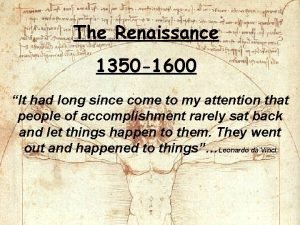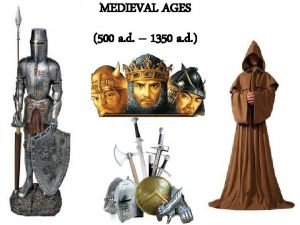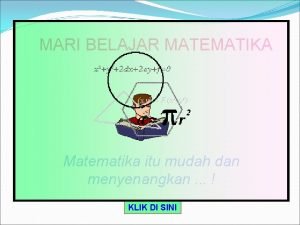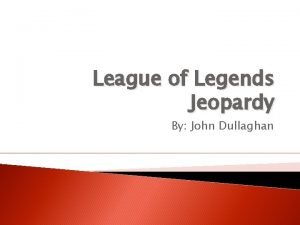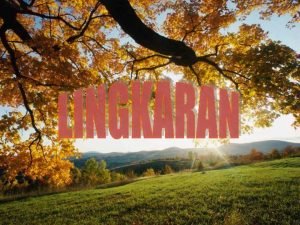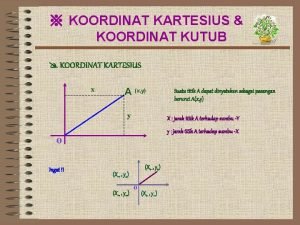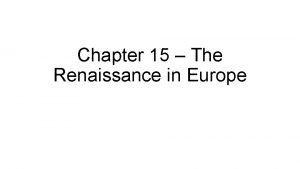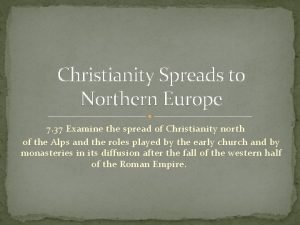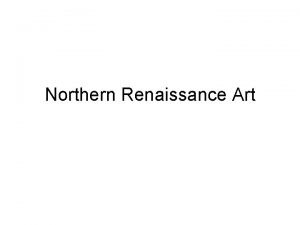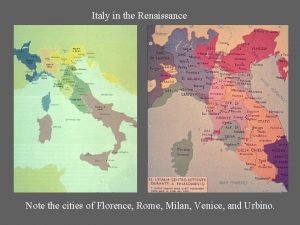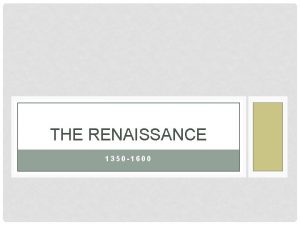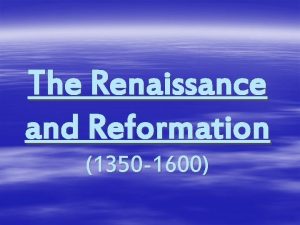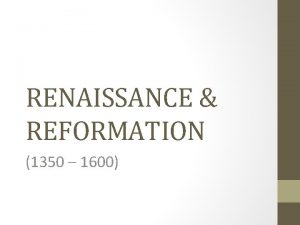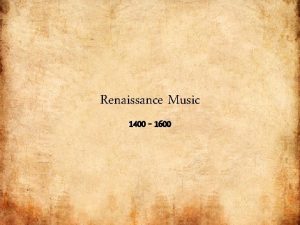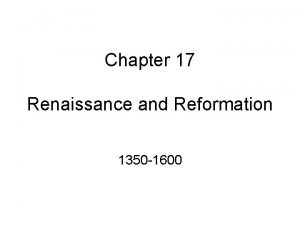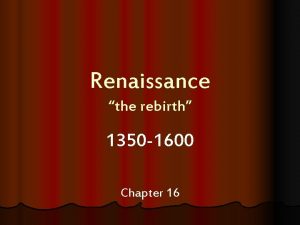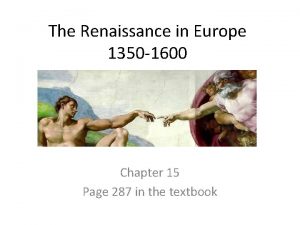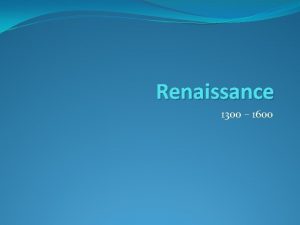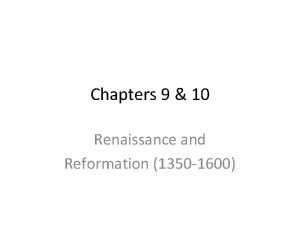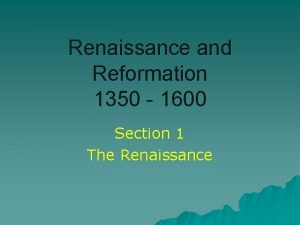CHAPTER 15 the Renaissance 1350 1600 LESSON I















- Slides: 15

CHAPTER 15 the Renaissance 1350 -1600 LESSON I – THE ITALIAN STATES LESSON 2 – Ideas and Art of the Renaissance

Humanism • Define “humanism” • Humanism – intellectual movement at the heart of the Italian Renaissance that focused on worldly subjects rather than on religious issues

a) Focused on the individual b) Secular, rather than focused on the church c) Based on the humanities: history, philosophy, grammar d) Based on a duty to promote civic life

e) Concerned with this life, not heaven or eternity f) Led to a change in literature g) Written in the “vernacular”: local language of the people, rather than in Latin h) Only Education became more secular i) Strived for: well-rounded citizens

The Printing Revolution 2) Major development around 1450 moveable type printing by Johannes Gutenberg in Germany Huge changes

• Books were made faster, easier & cheaper • People became literate: able to read & write • People had greater access to information & would learn about many subjects

Renaissance Art 1. Renaissance Art sought to: a. Imitate nature b. Showed reality of their subjects

Renaissance Art Leonardo a. Leonardo da Vinci (1452) – artist (Mona Lisa, The Last Supper), • the model “Renaissance Man” i. mastered the art of realistic painting ii. He dissected human bodies to understand how they worked

Renaissance Art Leonardo La Giaconda: The Mona Lisa – Louvre Museum, Paris

Renaissance Art Helicopter Trebuchet

Renaissance Art b. Rafael Sanzio: one of Italy’s best painters i. most famous work: School of Athens

Renaissance Art Michelangelo c) Michelangelo – Italian painter, sculptor & architect i. The David – Florence, Italy His figures painted on the Sistine Chapel ceiling 1. depict an ideal type of human being a. perfect proportions The Pieta

Renaissance Art Michelangelo

The Northern Renaissance • Renaissance moved to France, Belgium, Germany and the Netherlands • Erasmus – Dutch priest and Humanist. Called for a translation of the Bible from Latin into the vernacular of each nation, so that common people could read it

Humanism • Humanists were usually Christians who believed that the individual in the here and now had an important role to play • Education was important • Emphasis on individual achievement • Emphasis on classical Greek and Roman texts
 How long ago was the renaissance
How long ago was the renaissance Renaissance 1350
Renaissance 1350 The time of rebirth
The time of rebirth Important events in the renaissance
Important events in the renaissance Medieval times commercial
Medieval times commercial Pelurus dari sudut 90 derajat 30 menit 05 detik adalah
Pelurus dari sudut 90 derajat 30 menit 05 detik adalah League of legends jeopardy 2021
League of legends jeopardy 2021 Sudtradhara
Sudtradhara Perhatikan gambar disamping diketahui besar
Perhatikan gambar disamping diketahui besar Koordinat kartesius dari. r
Koordinat kartesius dari. r Lesson 1 the italian states
Lesson 1 the italian states Outcome of renaissance
Outcome of renaissance Italian renaissance vs northern renaissance venn diagram
Italian renaissance vs northern renaissance venn diagram The renaissance outcome renaissance painters/sculptors
The renaissance outcome renaissance painters/sculptors Northern renaissance art characteristics
Northern renaissance art characteristics Renaissance vs high renaissance
Renaissance vs high renaissance
